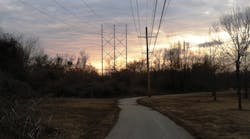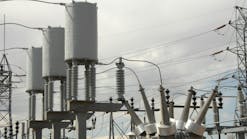Today there are dozens of public walking and biking trails that follow transmission corridors. And with proper guidance, awareness and demonstrated successes, hundreds more could be added for the public to enjoy.
As more and more people flock to urban areas, open spaces are fast becoming inadequate. Urban real estate is an extremely valuable commodity, and if the land was not claimed for public recreational use years ago, it is unlikely to happen now. Residents place a very high value on having open spaces and recreational areas in urban areas, but they typically are not willing to spend exorbitant amounts to obtain and develop the land.
There is no debating it, utilities around the country are looking for ways to improve customer service and experience, and a popular recreational space provided by a utility can do just that. Transmission corridors offer a unique opportunity to add to public spaces. Residents, utility companies, city employees and politicians all have a voice in developing transmission trail projects. When all parties work together, communities benefit.
In cases where a city owns the land, a trail may have a much more favorable chance of succeeding by allowing the city to expand its recreational facilities at relatively low cost. Some existing trails were developed with little more than a handshake or general agreement.
Issues to be addressed could include liability, vandalism and electromagnetic fields. But in most instances, these issues have not proven to be a showstopper
to a successful trail project.
Here are a few open trails in the U.S. that traverse under transmission lines:
• Recently legislators passed a bill in Texas to allow a "bicycle interstate" to run under existing power transmission lines. CenterPoint Energy agreed to provide the City of Houston with free access to about 500 miles (805 km) of utility rights-of-way across Houston, Texas. CenterPoint Energy donated $1.5 million to the development of the CenterPoint Trail, which is now in the piloting phase.
• In DuPage County, a stretch of the 61-mile (98-km) Illinois Prairie Path runs beneath Commonwealth Edison power lines.
• In Horsham Township in Connecticut, the Power Line Trail follows a PECO/Exelon right-of-way easement, connecting schools, parks, businesses and neighborhoods.
• In Long Beach, California, more than 10% of the 800-acre El Dorado Park is under transmission lines.
• In Seattle, Washington, the Chief Sealth Trail meanders along a greenway corridor in Beacon Hill, providing access to neighborhoods, schools and shopping.
So, why not work to have a trail in your community under your powerlines? The steps to develop a next-generation trail are relatively straightforward:
1. Map the transmission system
2. Develop a budget
3. Build consensus
4. Engage the community
5. Pilot the system
6. Analyze results and plan for the future
7. Form partnerships.
Successful projects can be found across the nation via the result of opportunistic citizens seeking to improve the livability and enjoyment of their cities. There is no one-size-fits-all solution for these transmission trails, but with open minds and carefully constructed agreements, these projects can be a great addition to any community. ♦
Mike Beehler is a vice president with Burns & McDonnell.
Will Kirby is a transmission engineer with Burns & McDonnell.




